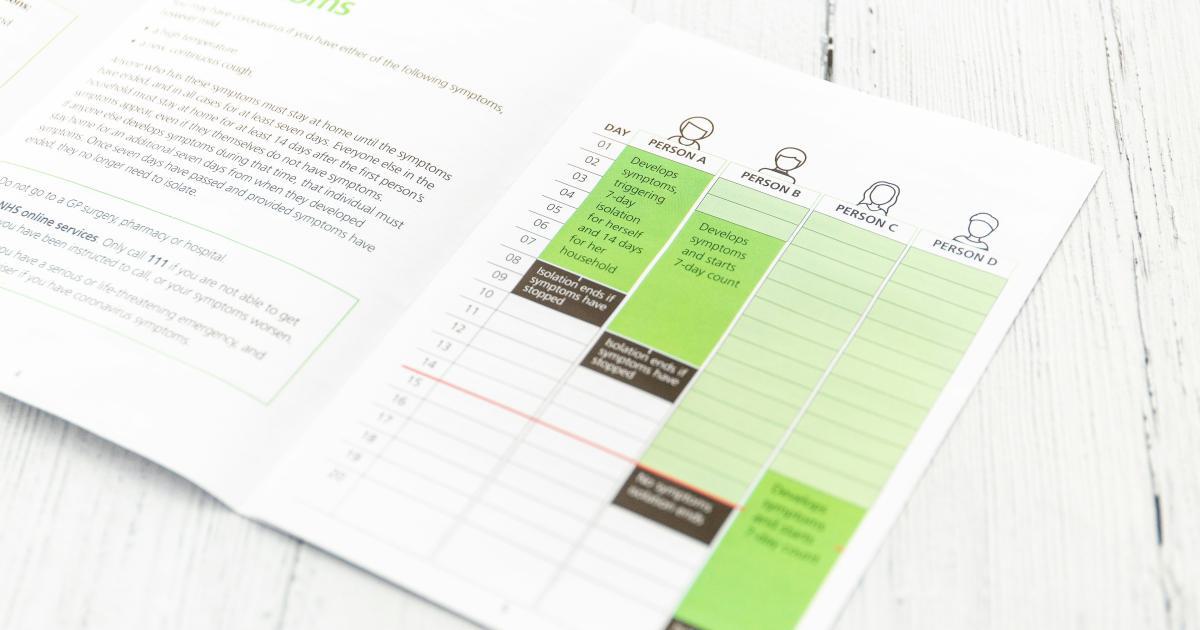How to Perform Content Audits For Better SEO


Understanding the Importance of Content Audits for SEO
Content audits are an essential component of any successful SEO strategy. By systematically reviewing and analyzing the content on your website, you can identify areas for improvement, optimize existing content, and create a content plan that aligns with your business goals and target audience. A well-executed content audit can have a significant impact on your search engine rankings, website traffic, and overall online presence.
What is a Content Audit?
A content audit is the process of evaluating the content on your website to assess its quality, relevance, and performance. This includes examining factors such as:
- Content Inventory: Identifying and cataloging all the content assets on your website, including pages, blog posts, images, videos, and other media.
- Content Analysis: Evaluating the content's relevance, accuracy, and alignment with your target audience and business objectives.
- Technical Optimization: Assessing the technical aspects of your content, such as page structure, metadata, and image optimization.
- Performance Metrics: Analyzing the performance of your content through metrics like traffic, engagement, and conversion rates.
By conducting a thorough content audit, you can uncover opportunities to improve the overall quality and effectiveness of your website's content, ultimately driving better SEO results.

The Benefits of Regular Content Audits
Performing regular content audits can provide numerous benefits for your SEO efforts:
Identify Content Gaps: A content audit can help you identify areas where your website lacks relevant, high-quality content, allowing you to create new content that addresses your target audience's needs.
Optimize Existing Content: By analyzing the performance of your existing content, you can identify opportunities to improve, update, or repurpose content that is underperforming.
Improve Site Structure and Navigation: A content audit can reveal issues with your website's structure and navigation, making it easier for search engines and users to find and engage with your content.
Enhance Content Relevance: By aligning your content with your target audience's interests and search behaviors, you can improve the relevance and effectiveness of your content, leading to better search engine rankings and increased user engagement.
Streamline Content Management: A comprehensive content audit can help you maintain a well-organized, up-to-date content inventory, making it easier to manage and update your website's content over time.
Measure Content Performance: Regularly analyzing your content's performance metrics, such as traffic, engagement, and conversions, can help you make data-driven decisions and continuously improve your content strategy.
To get the most out of your content audits, it's important to approach them with a strategic mindset and a focus on long-term results. By conducting thorough audits and implementing the insights gained, you can optimize your website's content for better SEO and achieve sustainable growth in your online presence.
Preparing for a Content Audit
Before you dive into the content audit process, it's essential to have a well-defined plan and the necessary resources in place. Here are the key steps to prepare for a successful content audit:
Establish Your Content Audit Objectives
Begin by clearly defining the goals and objectives of your content audit. This will help you stay focused and ensure that the audit aligns with your overall business and SEO strategies. Some common objectives for a content audit include:
- Improving search engine rankings and organic traffic
- Enhancing user engagement and conversion rates
- Identifying and addressing content gaps
- Optimizing the technical aspects of your content
- Streamlining content management and governance
By setting specific, measurable, and achievable objectives, you can better evaluate the success of your content audit and make informed decisions about the necessary improvements.
Assemble Your Audit Team
Conducting a comprehensive content audit often requires the collaboration of various team members, each with their own expertise and responsibilities. Consider involving the following roles:
- SEO Specialist: To provide insight into search engine optimization best practices and analyze the technical aspects of your content.
- Content Manager: To oversee the content inventory, assess content quality, and recommend improvements.
- Marketing Strategist: To ensure the content aligns with your target audience and marketing objectives.
- Web Developer: To address any technical issues or implement changes to your website's structure and functionality.
Depending on the size and complexity of your website, you may also involve other team members, such as copywriters, designers, or subject matter experts.
Gather Necessary Data and Tools
To conduct a thorough content audit, you'll need to gather a variety of data and leverage relevant tools. Some essential data sources and tools include:
- Content Inventory: Compile a comprehensive list of all the content assets on your website, including pages, blog posts, images, videos, and other media.
- Web Analytics: Use tools like Google Analytics to analyze your website's traffic, user behavior, and content performance metrics.
- Keyword Research: Utilize keyword research tools to identify the most relevant and high-performing keywords for your content.
- Technical Auditing Tools: Leverage tools like Screaming Frog, SEMrush, or Ahrefs to assess the technical aspects of your website and content.
- Content Management System (CMS): Ensure you have access to your website's CMS, which will allow you to review and make changes to your content.
By gathering the necessary data and equipping your team with the right tools, you'll be better prepared to conduct a comprehensive and effective content audit.
Establish Content Audit Criteria
To evaluate the quality and effectiveness of your website's content, you'll need to define a set of criteria to assess each content asset. These criteria may include:
- Relevance: How well does the content align with your target audience's interests and search queries?
- Quality: Is the content informative, engaging, and free of errors or outdated information?
- Optimization: Is the content optimized for search engines, with appropriate metadata, keyword usage, and technical elements?
- Performance: How are your content assets performing in terms of traffic, engagement, and conversions?
- Accessibility: Is the content accessible to users with disabilities, following best practices for web accessibility?
By establishing clear criteria for your content audit, you'll be able to consistently evaluate and prioritize the necessary improvements.

Conducting the Content Audit
With your preparation complete, it's time to dive into the content audit process. Here's a step-by-step guide to conducting a comprehensive content audit:
Step 1: Inventory Your Content
The first step in a content audit is to create a complete inventory of all the content assets on your website. This includes pages, blog posts, images, videos, downloadable resources, and any other content-related elements.
To gather this information, you can use a combination of methods, such as:
- Crawling your website with a tool like Screaming Frog or Ahrefs to generate a list of all URLs.
- Extracting content data from your CMS or other content management systems.
- Reviewing your website's sitemap and internal linking structure.
Once you have a comprehensive content inventory, organize the data in a spreadsheet or a content management system. This will serve as the foundation for your content audit.

Step 2: Assess Content Quality and Relevance
With your content inventory in hand, it's time to evaluate the quality and relevance of each content asset. Review each piece of content using the criteria you established earlier, such as:
- Relevance: Does the content effectively address the needs and search queries of your target audience?
- Quality: Is the content well-written, informative, and free of errors or outdated information?
- Optimization: Is the content optimized for search engines, with appropriate metadata, keyword usage, and technical elements?
As you assess each content asset, document your findings in your content inventory spreadsheet or content management system. This will help you identify areas for improvement and prioritize the necessary updates.

Step 3: Analyze Content Performance
Next, review the performance metrics for your content assets to understand their effectiveness. Utilize web analytics tools, such as Google Analytics, to gather data on:
- Traffic: How much traffic is each content asset generating, and where is that traffic coming from?
- Engagement: How are users interacting with your content, such as time on page, bounce rate, and conversion rates?
- Search Visibility: How do your content assets rank in search engine results, and which keywords are they performing well for?
By analyzing your content's performance, you can identify high-performing assets to replicate, as well as underperforming content that needs to be optimized or removed.

Step 4: Identify Content Gaps
With your content inventory and performance data in hand, you can now identify any content gaps on your website. This may include:
- Thematic Gaps: Areas where your website lacks comprehensive, in-depth coverage of a particular topic or subject matter.
- Keyword Gaps: Keywords or search queries that your content does not adequately address.
- Audience Gaps: Content that does not effectively engage or convert specific segments of your target audience.
Addressing these content gaps will help you improve your website's overall relevance, visibility, and user experience.

Step 5: Prioritize and Plan Improvements
Based on the insights gathered during your content audit, it's time to prioritize and plan the necessary improvements. This may involve:
- Optimizing Existing Content: Updating and improving underperforming content assets to enhance their relevance, quality, and technical optimization.
- Creating New Content: Developing new content to address identified gaps and better serve your target audience.
- Consolidating or Removing Content: Eliminating outdated, redundant, or low-performing content to streamline your website.
- Improving Content Structure and Navigation: Reorganizing your website's content hierarchy and navigation to enhance the user experience and search engine visibility.
Prioritize your content improvement efforts based on factors such as potential impact, resource availability, and alignment with your overall business and SEO objectives.

Implementing Content Audit Recommendations
Once you've completed the content audit and identified the necessary improvements, it's time to put your plan into action. Here's how you can effectively implement the recommendations from your content audit:
Optimize Existing Content
Start by focusing on optimizing your existing content assets. This may involve:
- Updating Content: Revise and refresh the content to ensure it is accurate, relevant, and engaging.
- Improving Keyword Optimization: Enhance the use of target keywords and related terms throughout the content.
- Enhancing Metadata: Optimize page titles, meta descriptions, and other metadata to improve search engine visibility.
- Optimizing Media: Ensure that images, videos, and other multimedia elements are properly optimized for search and user experience.
- Improving Technical Aspects: Address any technical issues, such as broken links, page speed, or accessibility problems.
By methodically optimizing your existing content, you can quickly and cost-effectively improve its performance and search engine rankings.

Create New Content
Based on the content gaps identified during the audit, develop new content assets that address the needs of your target audience. When creating new content, consider the following best practices:
- Conduct Thorough Keyword Research: Identify the most relevant and high-performing keywords to target with your new content.
- Align with User Intent: Ensure the new content effectively addresses the search queries and informational needs of your target audience.
- Enhance Content Quality: Produce well-researched, engaging, and informative content that provides genuine value to your readers.
- Optimize for Search: Apply on-page SEO best practices, such as using appropriate headers, internal links, and metadata.
- Promote and Distribute: Actively promote your new content through various channels to increase visibility and engagement.
By creating high-quality, optimized content that addresses your audience's needs, you can improve your website's overall relevance and search engine performance.

Improve Content Structure and Navigation
Your content audit may have uncovered issues with your website's structure and navigation, which can impact both user experience and search engine visibility. To address these concerns, consider the following improvements:
- Restructure Content Hierarchy: Reorganize your website's content into a more intuitive and logical structure, making it easier for users and search engines to navigate.
- Enhance Internal Linking: Improve the internal linking between related content assets, helping users and search engines discover and navigate your website more effectively.
- Optimize Content Labeling: Ensure your page titles, URLs, and other content labels are clear, concise, and accurately reflect the content's topic.
- Improve Site Search Functionality: Enhance your website's search functionality to help users quickly find the information they're looking for.
By improving the overall structure and navigation of your website, you can create a more user-friendly experience and improve your content's search engine visibility.

Maintain and Iterate
Conducting a content audit is not a one-time exercise; it should be an ongoing process as part of your overall content and SEO strategy. To ensure the long-term success of your content audit efforts, consider the following:
- Establish Continuous Monitoring: Set up regular content performance reviews and monitoring to identify new opportunities for improvement.
- Implement a Content Governance Framework: Develop a content governance plan to maintain the quality, consistency, and relevance of your website's content over time.
- Continuously Iterate and Refine: Use the insights gained from your content audits to continuously refine your content strategy, creation, and optimization processes.
- Collaborate Across Teams: Foster cross-functional collaboration between your marketing, SEO, and content teams to ensure a cohesive and effective content management approach.
By maintaining a continuous improvement mindset and embracing an iterative approach to content audits, you can ensure your website's content remains relevant, optimized, and aligned with your target audience's needs.

Conclusion
Conducting regular content audits is a crucial component of any successful SEO strategy. By systematically reviewing and analyzing the content on your website, you can identify areas for improvement, optimize existing content, and create a content plan that aligns with your business goals and target audience.
During the content audit process, you'll need to establish clear objectives, assemble a dedicated team, gather necessary data and tools, and define the criteria for evaluating your content. The audit itself involves inventorying your content, assessing quality and relevance, analyzing performance metrics, and identifying content gaps.
Once you've completed the audit, you can prioritize and implement the necessary improvements, such as optimizing existing content, creating new content to address gaps, and enhancing the structure and navigation of your website. Maintaining a continuous improvement mindset and iterating on your content audit process will ensure your website's content remains relevant, optimized, and effective for driving better SEO results.
By following the steps outlined in this comprehensive guide, you can leverage the power of content audits to improve your search engine rankings, increase website traffic, and ultimately achieve your business objectives.
Are You Crushing It in Internet Marketing?
Struggling to boost your online visibility and traffic? Semrush is the ultimate platform for digital marketers like you. With powerful SEO tools and competitive data insights, you can optimize your website, content, and campaigns for maximum impact.
Join over 7 million marketers already using Semrush to outrank their competitors, drive more qualified leads, and grow their businesses online. Get started today with a 7-day free trial, and unlock the full potential of your internet marketing strategy.
Unlock the Power of SEO with Semrush
Are you struggling to boost your online visibility and drive more traffic to your website? Semrush has the solution.
Our comprehensive platform offers advanced keyword research, competitor analysis, and SEO audits, empowering you to optimize your content and outrank your competition.